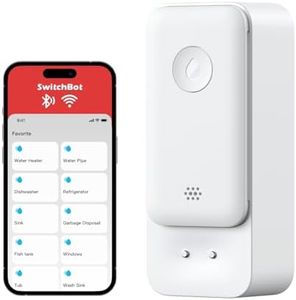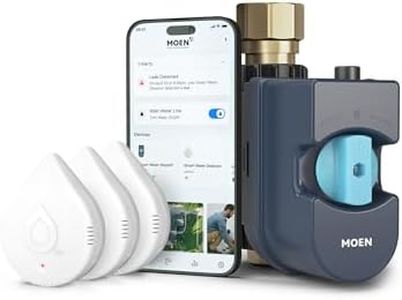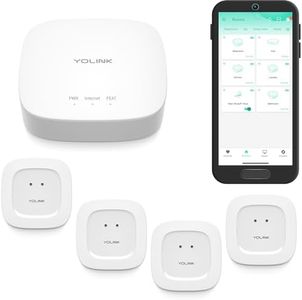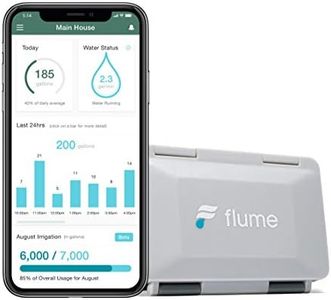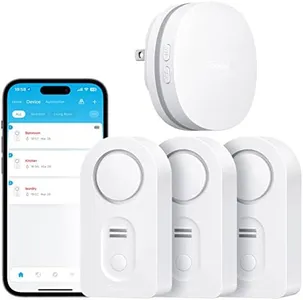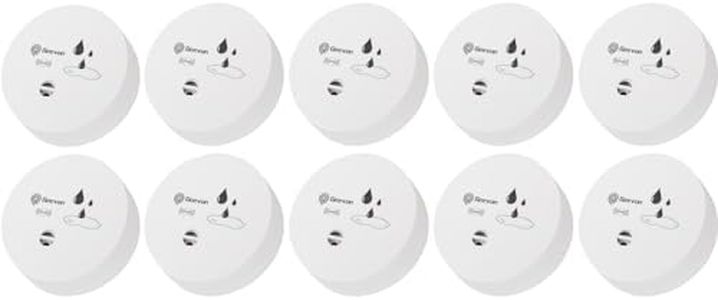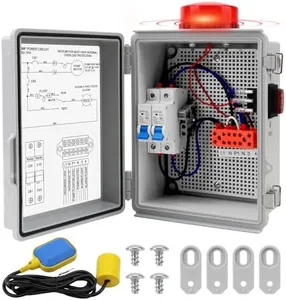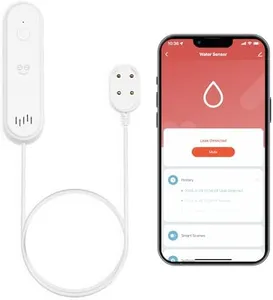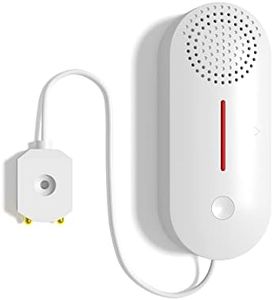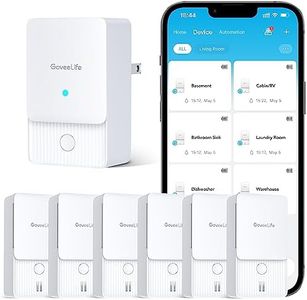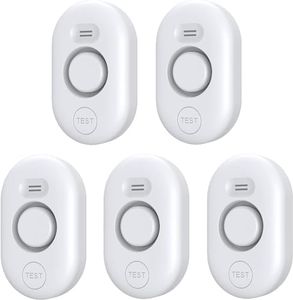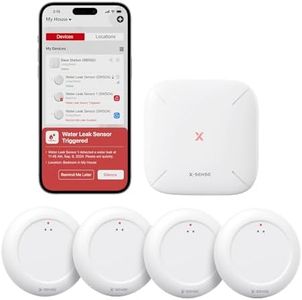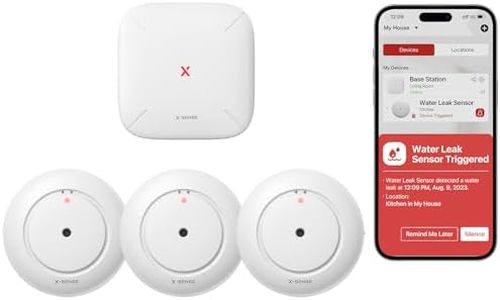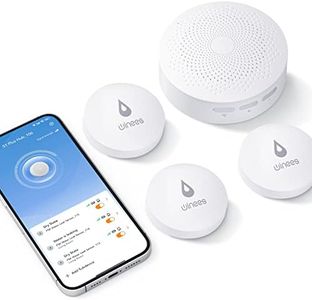10 Best Water Leak Sensors 2025 in the United States
Our technology thoroughly searches through the online shopping world, reviewing hundreds of sites. We then process and analyze this information, updating in real-time to bring you the latest top-rated products. This way, you always get the best and most current options available.

Our Top Picks
Winner
Moen 900-006 Flo by Moen 1-Inch Smart Water Shutoff with 920-005 Flo by Moen Smart Water Detector, 3-Pack
Most important from
62 reviews
The Moen 900-006 Flo by Moen 1-Inch Smart Water Shutoff paired with the 920-005 Flo by Moen Smart Water Detector bundle offers robust protection against water leaks. It features 24/7 monitoring and can automatically shut off water to prevent catastrophic damage, which is a strong point for anyone concerned about water-related issues in their home. The detection method is quite advanced with MicroLeak Technology that can identify very small leaks, ensuring that even minor issues are caught early.
Additionally, the app dashboard allows users to monitor water consumption and set conservation goals, promoting water savings and cost efficiency. The detectors can be placed in various vulnerable areas, further enhancing protection when paired with the shutoff valve. Connectivity is well-covered with compatibility with popular smart home systems such as Alarm.com, Ring, Google Assistant, and NICE, requiring only a Wi-Fi connection without needing a separate smart hub.
The power source is a standard AC/DC connection, which is convenient for continuous operation without the need for frequent battery changes. However, the installation process might require professional help due to the specific pipe fitting requirements (1-Inch to 1-1/4-Inch pipe diameter) and the valve types involved. This bundle is ideal for homeowners who want a comprehensive, smart solution to monitor and manage water leaks efficiently.
Most important from
62 reviews
YoLink Smart Home Starter Kit: Hub & Water Leak Sensor 4 with 105dB Audio Alarm 4-Pack, SMS/Text, Email & Push Notifications, Freeze Warning, LoRa Up to 1/4 Mile Open-Air Range, w/Alexa, IFTTT
Most important from
4598 reviews
The YoLink Smart Home Starter Kit is a solid choice for anyone looking to keep their home safe from water leaks. It includes one hub and four water leak sensors that are easy to set up, requiring just a simple plug into your Ethernet or Wi-Fi network. This makes it user-friendly, especially for those who may not be very tech-savvy. One standout feature is its impressive range, powered by LoRa technology, which allows it to function effectively even in challenging spaces like basements or outdoor areas, up to 1/4 mile away.
Another significant advantage is the 105dB audio alarm, which is quite loud and will alert you to potential leaks, enabling quick responses to avoid damage. Additionally, the sensors are waterproof with an IP66 rating, ensuring they can withstand various conditions. They also come with freeze warnings to help prevent issues during cold weather, which adds to their practicality.
There are a few drawbacks to consider. While the system is compatible with a wide range of smart home devices, it requires a stable internet connection and is limited to 2.4GHz Wi-Fi, which may not suit everyone’s home setup. The SMS notification feature is limited to 20 free texts per month, and additional texts come at a cost, which could be a downside for users who expect unlimited alerts. Lastly, while the batteries are long-lasting, they do require replacement, which can add to the maintenance effort.
Most important from
4598 reviews
YoLink Smart Home Starter Kit: Hub & Water Leak Sensor 4-Pack, SMS/Text, Email & Push Notifications, LoRa Up to 1/4 Mile Open-Air Range, w/Alexa, IFTTT, Home Assistant
Most important from
4598 reviews
The YoLink Smart Home Starter Kit is an excellent option for those looking to monitor multiple areas for water leaks. The kit includes a hub and four water leak sensors, making it ideal for larger homes or properties with multiple areas at risk. The detection method relies on contact sensors, which are highly reliable for water leak detection. The sensors are battery-powered, using AAA batteries that are included in the package, ensuring ease of setup and maintenance.
A standout feature is its extreme long-range connectivity powered by LoRa technology, allowing it to cover distances up to 1/4 mile, making it suitable for basements, sheds, and other challenging areas for Wi-Fi connectivity. The sensors are easy to install; you simply place them near potential leak sources like toilets, water heaters, and sinks. The YoLink Hub supports both Ethernet and WiFi (2.4GHz) connections, offering flexibility in setup. It can also send alerts via SMS, email, and push notifications, ensuring prompt notification of any leaks.
Additionally, the system integrates well with Amazon Alexa, IFTTT, and Home Assistant, which adds to its versatility in a smart home setup. A notable drawback is that the YoLink sensors require a hub to connect to the internet, meaning you must invest in the hub if you don't already have one. While the long-range capability is impressive, it may be more than necessary for smaller homes. The product has received positive reviews, with a 4.6 out of 5-star rating from over 4500 customers, indicating high user satisfaction. In summary, this product is a robust choice for those looking to cover larger areas or properties with potential water leak risks.
Most important from
4598 reviews
Buying Guide for the Best Water Leak Sensors
Water leak sensors are essential devices for detecting water leaks early and preventing potential water damage in your home or office. These sensors can alert you to leaks before they become major problems, saving you time, money, and stress. When choosing a water leak sensor, it's important to consider several key specifications to ensure you select the best one for your needs.FAQ
Most Popular Categories Right Now
